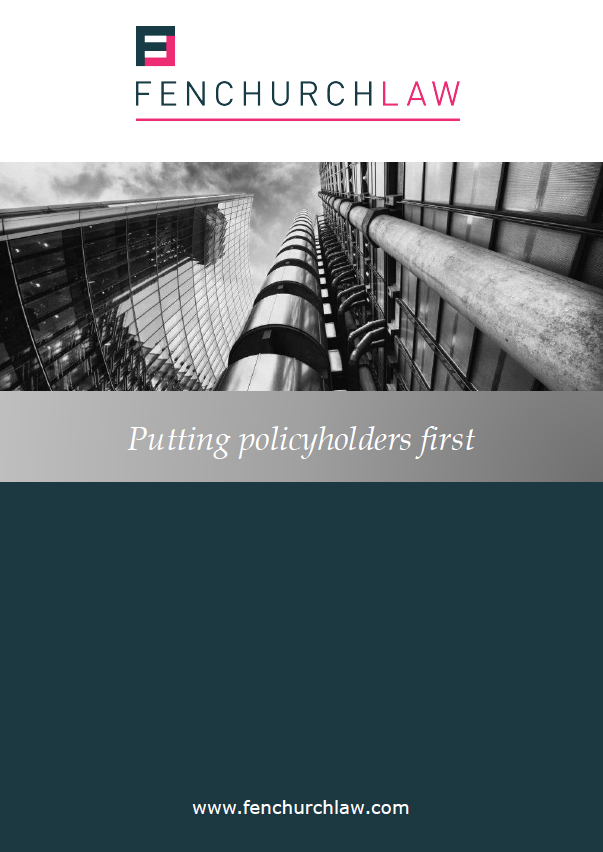
PII: What happened in 2018?
A number of interesting cases relating to professional indemnity insurance passed through the courts in 2018, and this article looks at four of them.
Euro Pools plc (in Administration) v RSA [2018] EWHC 46 (Comm)
Kicking the year off was the Euro Pools decision in January 2018.
The insured specialised in the design and installation of swimming pools. The products that were the source of this dispute were the movable swimming pool floors and the vertical booms that enabled division of the pool.
Problems were encountered with each feature, which led to two notifications under separate professional indemnity policy periods.
In summary, the Court found that an insured can only notify a circumstance of which it is aware. Whilst that may seem obvious, it does highlight the issue that policyholders may face with claims-made policies when investigations (and problems) are developing.
Whilst this case was very fact-specific (as most notification cases are), the lesson for policyholders is to give very careful consideration to the wording of notifications. The notification of the circumstance must be appropriately framed and there will ultimately need to be a causal link between the perceived circumstance and the claim.
An appeal was heard by the Court of Appeal last month and its outcome is awaited.
Cultural Foundation v Beazley Furlong [2018] EWHC 1083 (Comm)
Cultural Foundation was another decision involving notifications over multiple policy periods.
In this case the Defendants were the professional indemnity insurers of a firm of architects that had become insolvent before proceedings were issued. The Claimants had arbitration awards against the architects and sought indemnity from the primary insurer and the excess layer insurers.
The notification dispute arose because there had been two notifications within two separate policy years. Taken together the arbitration awards exceeded the primary policy limit but individually they were within it. The Court found that the Claimants could choose the policy year to which the claim could attach because, very unusually, there was no exclusion of claims arising from prior notified circumstances.
Dreamvar (UK) Ltd v Mary Monson Solicitors [2018] EWCA Civ 1082
Dreamvar is a significant case for conveyancing solicitors and their professional indemnity insurers.
The decision by the Court of Appeal involved two joined cases that both concerned the liability of solicitors for identity fraud in property transactions. In both cases the solicitors acting for the seller had carried out inadequate identity checks. Whilst the fraud was discovered before the registration of title, the funds for the purchase had been lost by then.
While not liable in negligence, the buyer’s solicitors were found liable in breach of trust for failing to identify that the seller was not in fact the owner of the property and thus releasing the completion money when their client would not be obtaining good title. The buyer’s solicitors sought relief under section 61 of the Trustee Act 1925 on the basis that they had acted honestly and reasonably. Whilst the Court did not dispute that, it nevertheless declined to grant relief on the basis that the solicitors were better able to absorb the loss, via insurance, than could the client.
This decision clearly extends the circumstances in which solicitors can be found liable in fraudulent transactions, even when the fraud may have principally occurred as a result of the failing of the other side’s solicitors. It remains to be seen whether this principle will extend to transactions other than conveyancing.
This decision may well have an impact on the PI market. Whilst the SRA Minimum Terms will cover claims of this type, some professional indemnity insurers may simply withdraw from this market altogether, forcing up premiums for solicitors doing conveyancing.
Dalamd Ltd v Butterworth Spengler [2018]
The Claimant was the assignee of the causes of action of three companies owned by the same family. One of those, Doumac, had a recycling business which it operated from premises owned by another company, Widnes. Buildings insurance was arranged with Aviva and included an external storage condition in which combustible material had to be kept at least 10m away from buildings. Doumac had been warned about their waste management previously and had a history of minor fire incidents.
Doumac then went into liquidation and its assets and goodwill were transferred to the third company, JLS. XL provided insurance for the plant and machinery that JLS now owned.
A catastrophic fire destroyed the premises. Claims were made against Aviva and XL. Aviva sought to avoid its policy for: (i) the non-disclosure of Doumac’s insolvency and its previous fire history; and (ii) breach of the external storage condition. XL sought to avoid its policy for non-disclosure of previous incidents and warnings as to fire risk.
In circumstances where the Claimant blamed the broker for the non-disclosures, and may have recognised that claims against the insurers presented difficulties, it sued only the broker.
The Court was asked to consider two significant points in relation to causation. Firstly, in the context of a claim only against the broker and with no prior settlement at all with the insurer, whether it was enough for the Claimant just to prove that the claim under the insurance policy had been impaired and that it therefore lost the chance to claim under it. Secondly, in circumstances where Aviva had also declined cover for a reason unrelated to the broker’s negligence (the breach of the storage condition), whether determining if the claim would still have failed on that ground should be decided on a balance of probabilities or loss of a chance basis.
In relation to the first point, the Court held that, where the policyholder had elected to sue only the broker and not recovered anything at all from the insurer beforehand, it must establish on the balance of probabilities that the insurer’s denial of coverage was correct. That contrasts with the position where, before suing the broker, the policyholder had reached a reasonable settlement with the insurer. In that situation, the policyholder can sue for any shortfall in the settlement without having to prove that the insurer’s coverage defence was a good one.
On the second issue, the Court held that the insurer’s alternative ground for declining cover should be considered on a balance of probabilities basis. Consequently, the Claimant only succeeded in the claim in relation to the XL policy as it was held that, on the balance of probabilities, Aviva would have been entitled to decline indemnity pursuant to the breach of the storage condition irrespective of the non-disclosures.
Following this decision, policyholders should only pursue the broker in the clearest of cases, where there is no real doubt that the insurer’s stance is well founded. In any other situation, first challenge the insurer’s stance with a view to reaching a reasonable settlement and only then contemplate a claim against the broker for the shortfall.
Conclusion
The four cases considered here collectively represent mixed news for professionals. Solicitors dealing with property transactions will understandably be dismayed by the Court of Appeal’s decision in Dreamvar. By contrast, insurance brokers will take comfort from Butcher J’s disinclination in Dalamd to help clients to recover their losses from their broker in circumstances where the insurers’ declinature can ultimately be shown to have been unjustified. Finally, the two other cases (Euro Pools and Cultural Foundation) are reminders that the notification of a “circumstance” to a professional indemnity policy continues to represent a fertile source of disputes between professionals and their insurers.
James Breese is an associate at Fenchurch Law
Other news
Fenchurch Law expands into Scandinavia with Denmark office launch
31 October 2024
Fenchurch Law, the award winning international law firm working exclusively for insurance policyholders and brokers,…



